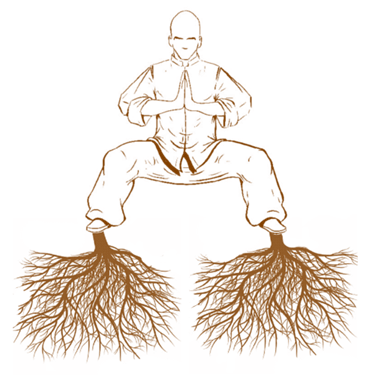Chinese weapons
This is another excerpt from an essay written by Dai-SiHing Kevin Sears. Please go read his many writings, spanning a variety of subjects. He is in my opinion one of the best authors on both Chinese martial history, and Philosophy today.

During the Tang and Song Dynasties (from the 900s to late 1300s) weapons fighting was the basis of Chinese military arts training. These skills took form and were perfected during this time. Empty-handed fighting remained rudimentary by comparison during this period.
Complex hand systems evolved much later in the late Ming and early Qing eras. While sophisticated hand methods may have been founded and built upon older principles, the majority of the arts and forms practiced today (in their current form) had their genesis no earlier than the early to middle Qing Dynasty (1600s – 1800s).
Today in most traditional martial arts schools, weapons training only begins in any earnestness after significant time spent in fundamental empty-handed practice, and some proficiency has been gained in these skills. The logic here is that one should develop certain skills before adding a more complex and potentially dangerous element. However, this is a relatively new view in the overall history of Chinese martial arts.
Shaolin Temple records are one of, if not the greatest, single source for Chinese martial arts history. This is because of several factors. Many ancient martial arts masters were highly secretive and would not have chosen to record much of their fighting methods; they guarded their military skills no different than how nations guard their secrets today. However, even if they would have been willing to leave written records, many ancient fighters were illiterate. Most fighters became professional martial artists (bodyguards, couriers, soldiers, etc.) out of necessity and not choice. The vast majority would have come from small, poor, farming communities, and would not have received a classical education.
Today we have a romanticized view of the highly educated scholar warriors and monk warriors presented in movies, video games, and other popular outlets. While such individuals did indeed exist, they were a comparatively small group. As a result, the vast majority of professional martial artists would have been unable to leave written records. However, at the Shaolin Temple, the resident monks would have had the ability to read and write in order to study and copy Buddhist texts. In addition, the Temple enjoyed great fame through many periods of Chinese history, and as such it would be a place rich and powerful families would send their sons for Buddhist education. It was even a place where many Imperial officials, and military generals or officers would retire after ending their careers as agents of the throne. Many of these individuals would have been among the most highly educated individuals in all of the empire and learned in all aspects of classical Chinese culture.
Additionally, the Shaolin Temple enjoyed a higher level of protection from the dynastic governments than did other temple and monasteries because of its fame and the fact it had been a place of pilgrimage for many rulers.
All of these factors combined to make the records of the Shaolin Temple some of the largest and most extensive records on Chinese martial arts throughout history. What these records show us is that even at the Temple, emphasis on empty-handed martial arts is a relatively new occurrence, taking hold during the Qing Dynasty, a little more than 400 years ago.
When martial arts existed as battlefield and war arts, weapons were always used. A soldier had to be trained in the use of their primary, as well as backup, battle weapons and empty-handed fighting skills were much less valued because they were not as useful for the battlefield. Just like modern military soldiers, if the ancient warrior got to the point of fighting with their hands, that means they had lost all of their weapons; several things had gone wrong in that engagement.
Most empty-handed fighting methods in these times were rudimentary. But the weapons training was highly emphasized and extremely sophisticated. Then in the Qing Dynasty there was an explosion of highly refined empty-handed systems. This is due to several converging factors, one of which is because of the introduction of firearms to warfare in China. As guns became more prevalent in war, personal fighting skills lost value. Eventually, martial arts became arts of self-cultivation (which was also a fairly new concept) and even when used directly for combat, it was often in the realm of organized contests or private duels.
Chinese martial arts weapons training is built around the four primary weapons (staff, saber, spear, and sword). Many systems have many weapons sets, and traditionally there are considered 18 major classifications of weapons. However, a student’s basic weapons education would encompass these four basic constructions, and their techniques can be adapted to all similarly constructed weapons. One would also have some idea of what to expect from an opponent’s weapon style. Familiarity with several types of weapons gave a fighter a better understanding of how an opponent might utilize a weapon should they use one that is similar. Similar weapons will have similar techniques, and just as there are only so many ways to punch and kick, there are only so many ways to swing and thrust a weapon.
You can read more articles from Dai-SiHing Sears at:
https://splinteredstaff.wordpress.com/
a b c d e f g h i j k l m n o - Do not remove from template!!! it is important to support different fonts

ShaolinLohanInfo@gmail.com
2135 E. Independence #1012 Springfield, MO 65804




